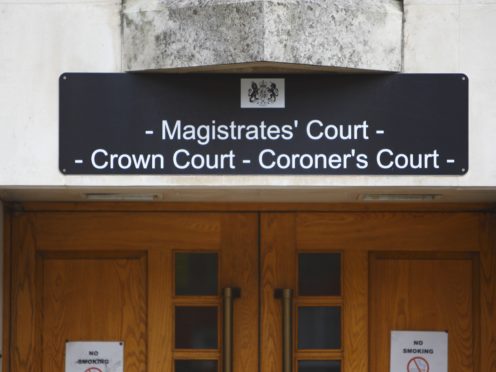A former EastEnders cast member died after taking an excessive amount of morphine while suffering from two terminal lung conditions, an inquest has heard.
Alexandra “Sandy” Ratcliff was one of the BBC soap’s original cast members and appeared as cafe owner Sue Osman between 1985 and 1989.
But off screen, she struggled with heroin addiction for about 20 years, an inquest at Poplar Coroner’s Court heard.
She died aged 70 in the bedroom of her sheltered housing accommodation at St Peter’s House on Bethune Road in Stoke Newington, London, on April 7 2019.
The inquest heard that she had been discharged from hospital the day before and given morphine for pain relief.
Her cause of death was given as bronchopneumonia and morphine toxicity as a result of a malignant lung tumour and chronic obstructive pulmonary disease (COPD).
Her son, William Palmer, said his mother suffered three strokes in the years leading up to her death – the first taking place shortly after her partner died in 2013.
Giving evidence, he said the stroke had left her with pain in her left arm, for which she was prescribed codeine.
But the inquest heard that Ratcliff would take more than her prescribed amount for both pain management and “recreational use”.
At one point, she was taking 100 tablets per week, before it was reduced to eight, the inquest heard.
Her GP, Dr Helen Freeman, said: “The difficulty with chronic pain is that it is difficult to manage with opioids and she was taking these at higher levels.”
Dr Freeman said Ratcliff was aware she had a malignant tumour after being diagnosed in 2014.
In October 2018, her condition started to worsen and by February 2019 she had started coughing up blood.
Giving evidence, Dr Freeman said Ratcliff was seen on numerous occasions by GPs in early 2019, but declined admission to hospital.
Dr Freeman said she visited Ratcliff on March 18 and told her “she could be dying and was fatally unwell”.
The inquest heard that Ratcliff was eventually convinced to go to hospital by her carer and was treated for a lung infection.
Dr Freeman said Ratcliff was discharged from hospital on April 6 and her codeine was switched to morphine.
But the following morning, her carer went into her bedroom and found Ratcliff unresponsive.
Paramedics were called, but she was declared dead at 8.17am, the inquest heard.
Pathologist Alan Bates said the level of morphine found in her blood was within the therapeutic range.
But he added: “There is a danger as morphine is a respiratory depressant there is a greater danger of overdose when there is significant natural lung disease.”
Giving her conclusion, coroner Mary Hassell said Ratcliff was “near to the end” when she was admitted to hospital.
She said: “I don’t think the morphine was used to end her life. She was using it as she had used drugs for many years.
“She died from a combination of two naturally occurring terminal conditions and an excess of morphine.”
